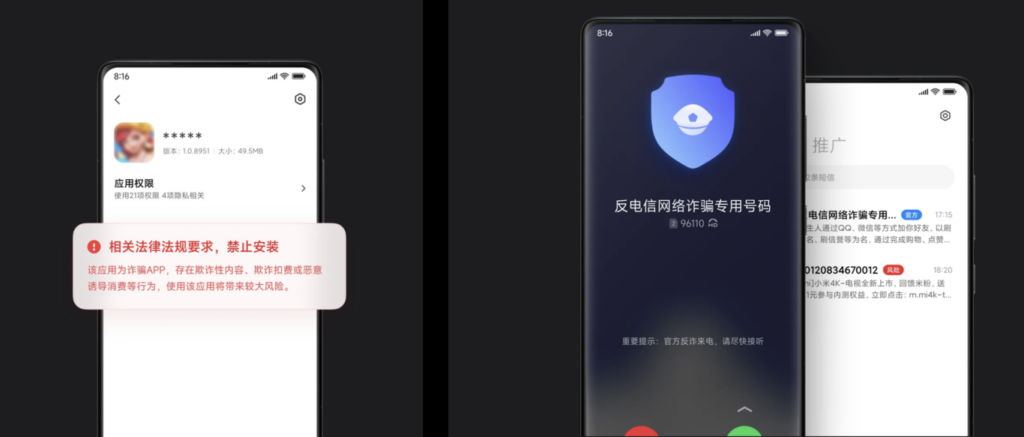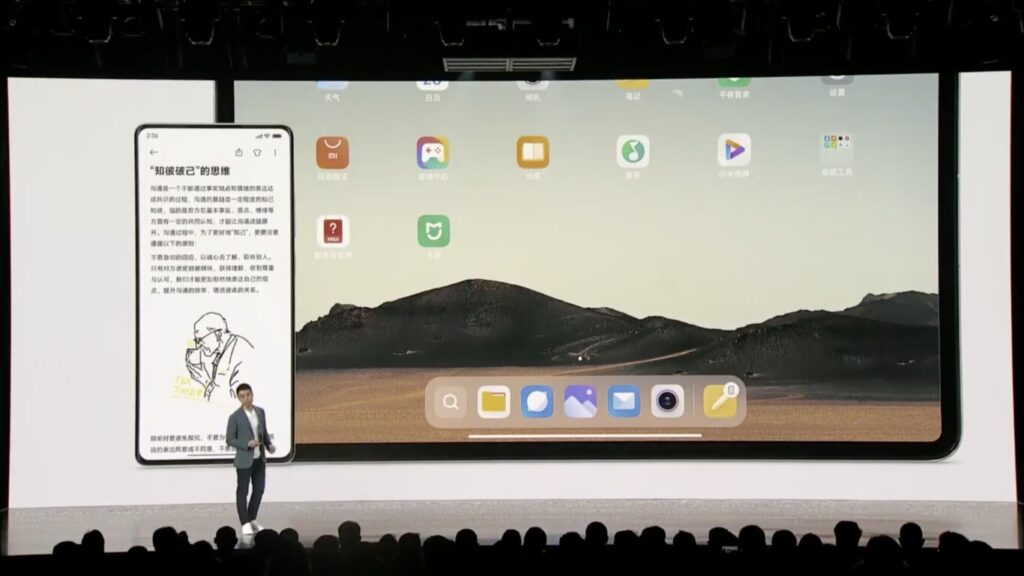We bring you all the information about the new MIUI 13, the new version of the Android customization layer that Xiaomi has on its devices. With it, the Chinese manufacturer gives its equipment a unique and differentiating aspect to the rest of Android devices, and today they have presented their new features.
Let’s start by reminding you of the minimum requirements of this system, and then we will move on to the list with the summary of its main new features. After that, we will give you a complete list of all the phones that will receive the MIUI 13 update and their approximate dates, and we will finish with a summary of how you can update.
What are the minimum requirements for MIUI 13?
Unfortunately, the requirements of mobile operating systems and their customization layers have nothing to do with the hardware of your phone. This means that it does not matter if your mobile is powerful or not, what matters is that Xiaomi includes the model in the list of devices that are going to update to adopt the new version of MIUI.
The models that are going to update depend on each manufacturer, and in the case of Xiaomi is the same. Later we will tell you the list of devices confirmed to receive this update, although over time the list may expand a bit with some new devices that will update later.
What’s new in MIUI 13

Now, we are going to tell you in summary what are the main new features of MIUI 13, so that you know what you are going to find as soon as you get the update. We are going to focus on the general new features of the operating system, because specific mobile models may have specific new features depending on their hardware.
- Performance improvements: The great feature in MIUI 13 is the performance and optimization of the system, and Xiaomi has worked hard in that direction. They claim to have managed to increase by up to 26% the system optimization compared to MIUI 12 and to have increased by up to 52% the performance of running third-party applications. Therefore, everything will be faster.
- New control center: MIUI 13 will also have a new control center called Mi Magic Center, which focuses on ease of interaction with other devices in the Xiaomi ecosystem. This will allow you, for example, to transfer files, copy notes, and these types of interactions between devices in a very simple way.
- Renewed Widgets: Xiaomi has also paid special attention to the Widgets system, which has been renewed to be more aesthetic and offer more functionality for everyday use. In addition, many of them are animated.
- New font for its mobiles: Xiaomi is also going to give a distinctive touch to the aesthetics of its mobiles with a new font in MIUI 13. It is called MiSans, with its exclusive design.
- New wallpapers: As always when a manufacturer renews the version of its customization layer, it also changes the wallpapers. Those of MIUI 13 perform better color management to take advantage of each type of panel and change their hue depending on the brightness. They are also animated.

- Caller ID: Xiaomi has also implemented a batch of options to improve privacy and security. One of them is a caller ID, which will detect spam calls before picking up the phone.
- Improvements in the detection of dangerous apps: It also implements a system to detect potentially dangerous applications, both those you have on your phone and those you are going to install before doing so.
- More security in Mi Pay: Xiaomi’s payment system will be able to detect the most sensitive information of the documents you have added, and will improve its security in case of any oversight.
- App access details: The information on what data the apps you have installed have access to is improved, improving your privacy. Facial recognition is also improved in mobiles that do not have proprietary sensors through artificial intelligence.
- Customizable virtual assistant: Xiao AI, the virtual assistant that together with Mi Pay is only available in China, will now be customizable. We will be able to give it a face and even choose its clothes.
There will be a new MIUI 13 Pad

One of the main novelties of MIUI 13 is that there will be a specific version created for tablets, such as the Xiaomi Pad 5, called MIUI 13 Pad branded as the Xiaomi Pad 5. It comes to be a move similar to what Apple did when it launched iPadOS, and in fact, MIUI 13 Pad has design lines inspired by Apple’s system.
What this version does is to adapt the customization layer to the specific needs of a tablet, resizing menus and with specific options. One of these options will be multitasking, with which you will be able to work with several applications at the same time as long as they support the function. At the moment, there are 3,000 apps acclimated to it.
Which cell phones will be compatible with MIUI 13

At the moment, Xiaomi has not yet confirmed all the phones that will receive MIUI 13, but we already know that the first to do so will be the Xiaomi Mi 12. In addition, there has already been a leak of the update schedule that allows us to know the complete list of phones, and that the updates will be spread over three phases. Here you have it all:
The first phase (From its presentation until February)
- Xiaomi Mix 4
- Xiaomi Mi 11
- Xiaomi Mi 11 Pro
- Xiaomi Mi 11 Ultra
- Xiaomi Mi 11 Lite 5G
- Xiaomi Mi 11i
- Xiaomi Mi 11X Pro
- Xiaomi Mi 11X
- Xiaomi Mi 11 Lite
- Xiaomi 11T
- Xiaomi 11T Pro
- Xiaomi CIVI
- Xiaomi Mi 10S
- Xiaomi Mi 10
- Xiaomi Mi 10 Pro
- Xiaomi Mi 10 Ultra
- Xiaomi Mi 10T
- Xiaomi Mi 10T Pro
- Redmi K40
- Redmi K40 Pro
- Redmi K40 Pro+
- Redmi K40 Gaming
- Redmi K30S Ultra
- Redmi Note 10 Pro 5G
- Redmi K30 Pro
- Redmi K30 Pro Zoom
- Redmi K30 4G
- Redmi K30 5G
- Redmi K30i 5G
- Redmi K30 5G Speed edition
- Redmi K30S Ultra
- POCO F2 Pro
- POCO F3
- POCO F3 GT
- POCO X3 Pro
- POCO X3 GT
The second phase (between March and April)
- Xiaomi Pad 5
- Xiaomi Pad 5 Pro
- Xiaomi Pad 5 Pro 5G
- Xiaomi 11 Lite 5G NE
- Xiaomi Mi 10 Lite
- Xiaomi Mi 10 Lite Zoom
- Xiaomi Mi 10i
- Xiaomi Mi 10T Lite
- Redmi Note 11 (China)
- Redmi Note 11T (India)
- Redmi Note 11 JE (Japan)
- Redmi Note 11 Pro (China)
- Redmi Note 11 Pro + (China)
- Redmi Note 10
- Redmi Note 10S
- Redmi Note 10 (China)
- Redmi Note 10 5G (global version)
- Redmi Note 10T (India)
- Redmi Note 10T (Russia)
- Redmi 10
- Redmi 10 Prime
- POCO M4 Pro 5G
- POCO X2
The final phase of roll-out (will start after completion of the second phase)
- Xiaomi MIX FOLD
- Xiaomi Mi 9
- Xiaomi Mi 9 SE
- Xiaomi Mi 9 Lite
- Xiaomi Mi 9 Pro 5G
- Xiaomi Mi 9T
- Xiaomi Mi 9T Pro
- Xiaomi Mi CC 9
- Xiaomi Mi CC 9 Pro
- Xiaomi Mi Note 10 / Pro
- Xiaomi Mi Note 10 Lite (Android 12)
- Redmi K30 Ultra
- Redmi K20
- Redmi K20 (India)
- Redmi K20 Pro
- Redmi K20 Pro (India)
- Redmi K20 Pro Premium Edition
- Redmi Note 8 2021
- Redmi Note 9 4G
- Redmi Note 9 5G
- Redmi Note 9T 5G
- Redmi Note 9S
- Redmi Note 9 Pro (India)
- Redmi Note 9 Pro (global version)
- Redmi Note 9 Pro 5G (China)
- Redmi Note 9 Pro Max
- Redmi Note 10 JE (Japan)
- Redmi Note 10 Lite (India)
- Redmi Note 10 Pro (India)
- Redmi Note 10 Pro Max (India)
- Redmi Note 10 Pro (global version)
- Redmi 10X 4G
- Redmi 9A
- Redmi 9AT
- Redmi 9i
- Redmi 9A Sport
- Redmi 9i Sport
- Redmi 9C
- Redmi 9C NFC
- Redmi 9 (India)
- Redmi 9 Activ (India)
- Redmi 9 Prime
- Redmi 9
- Redmi 9T
- Redmi 9 Power
- Redmi 10X 5G
- Redmi 10X Pro
- Redmi Note 8
- Redmi Note 8T
- Redmi Note 8 Pro
- Redmi Note 9
- POCO X3 (India)
- POCO X3 NFC
- POCO M3
- POCO M2 Pro
- POCO M3 Pro 5G
- POCO M2
- POCO C3
- POCO C31
How to upgrade to MIUI 13
To update your phone to MIUI 13, first, you have to wait for your phone to receive the update. Once it does, if you do not get a notification to click on to update, open the settings of your phone and go to the About phone section. There you can see all the information related to your phone, and even before entering it will show you the version of MIUI you are using.
When you enter, you have to click on the System Update option that you have at the top of the screen. You will go to a screen where you will be informed of the updates you have available. In case none appear, you can always click on the Check for updates button to search for them on Xiaomi’s internal servers. When it’s time to update to MIUI 13, you can force the check if you do not want to wait for the phone to do it every so often.
This post may contain affiliate links, which means that I may receive a commission if you make a purchase using these links. As an Amazon Associate, I earn from qualifying purchases.

